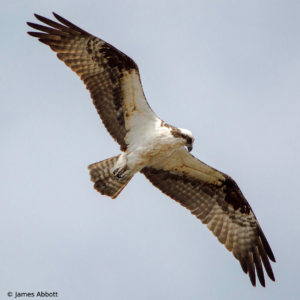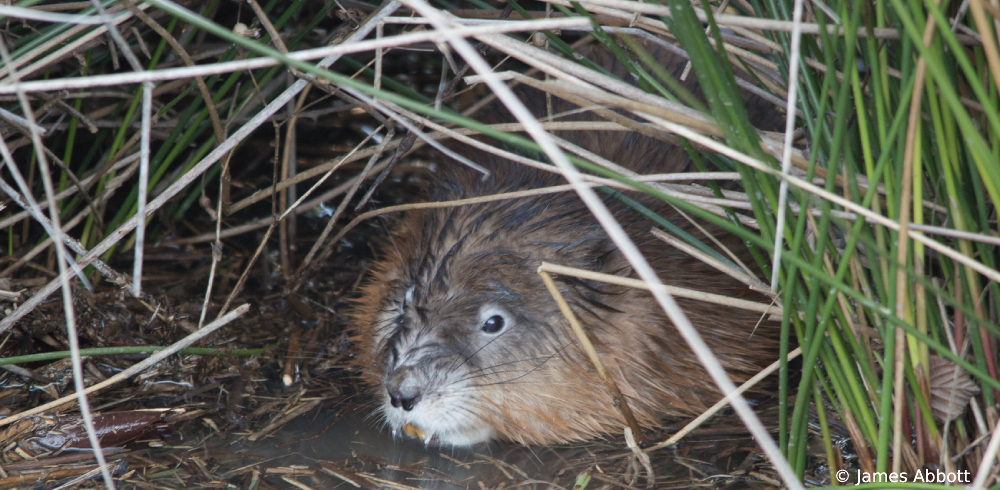 Welcome back to the marsh!
Welcome back to the marsh!
As the chill of winter departs, many of our familiar plants and animals are beginning to return, ready to become active again during the warm weather. Today, we will discuss several animals that you can expect to see in marshes this spring.
Muskrats are aquatic rodents and distant cousins to the larger, dam building beaver. They can be differentiated from their engineering relatives by being much smaller and having a thin, hairless tail. Throughout the Lower James River watershed, you can expect to see many, many of these with a bit of luck. Muskrats create structures known as “push-ups”, made out of woven marsh grasses and other plant materials. While they are usually nocturnal, observant marsh visitors can see muskrats swimming around during the day foraging on delicious aquatic vegetation.
Ospreys are one of the most charismatic birds of prey that call the Lower James their home. These fish-eating hawks have one of the longest wing-to-body ratios out of any species of bird. Spectacular builders in their own right, ospreys construct massive nests out of sticks, adding on to them each year. Visitors to the James, its tributaries, and other bodies of water throughout the watershed can see this awesome bird of prey expertly fishing and pairs of birds reaffirming their bonds by feeding one another. Be sure to look up in trees near the water, you just may see some brand new parents starting to raise this year’s chicks!
Interested in exploring the marsh up close and in person? Check out JRA’s “Connect with the James” paddles! Now through the fall, guided paddles throughout the watershed can give participants an up close look at plants and animals that call the James home.

